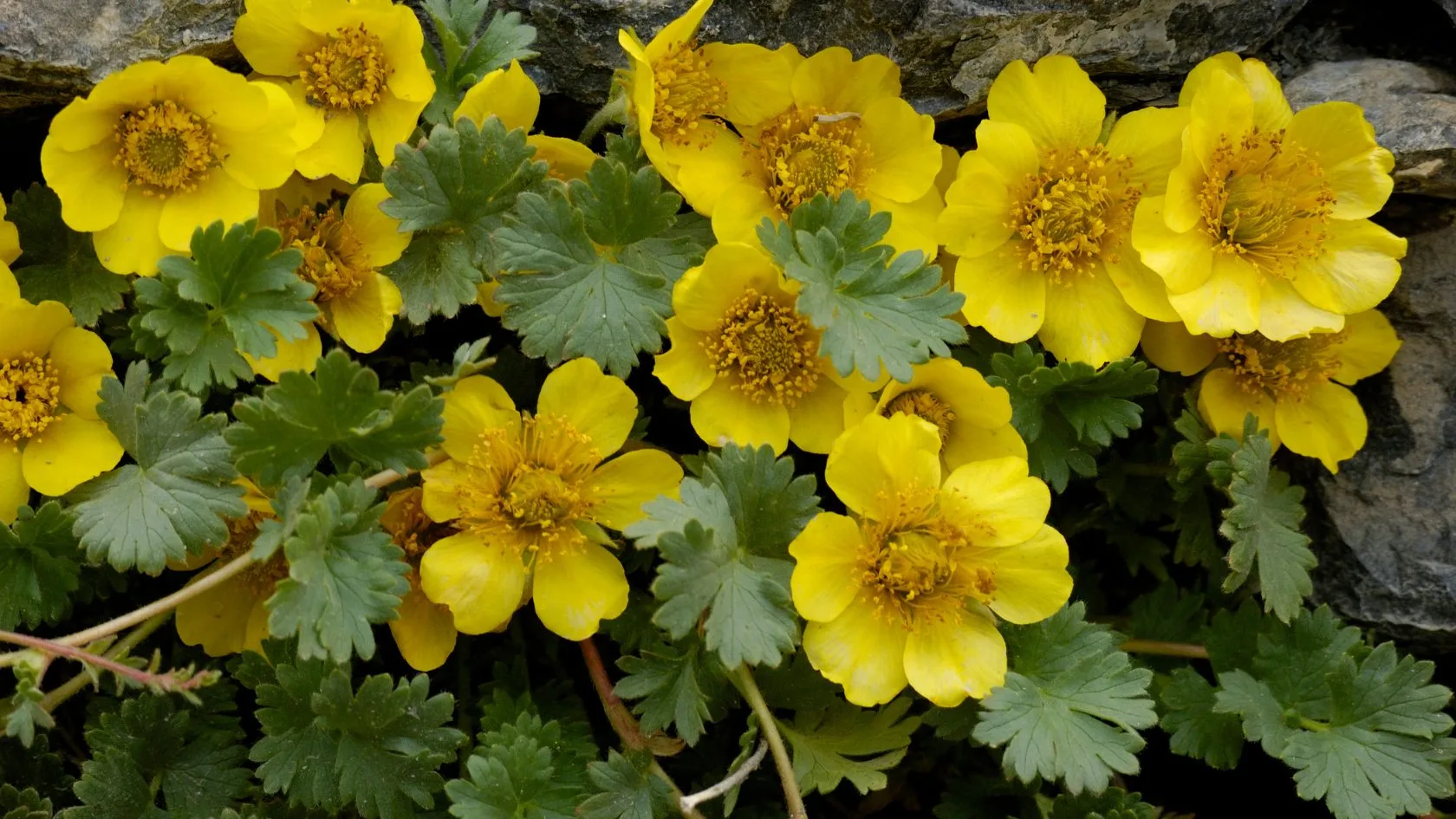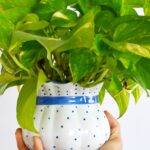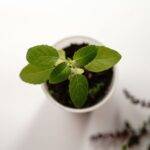The Chinese Money Plant, also known as Pilea peperomioides, is a popular houseplant that is appreciated for its unique, coin-shaped foliage. It’s native to southern China and thrives in bright, indirect light.
Types of Chinese Money Plant
- Pilea peperomioides
- Jade Plant
- Golden Pothos
- Money Tree
- Lucky Bamboo

Benefits of Chinese Money Plant
Here are some of the benefits associated with this plant:
Air Purification: While not included in NASA’s list of air-purifying plants, the Chinese Money Plant is still believed by some to help remove harmful pollutants from the air.
Low Maintenance: It’s quite easy to care for, requiring only good light, moderate watering, and occasional feeding during the growing seasons.
Prosperity and Luck Symbolism: Often associated with wealth and luck, it’s thought that the healthier the plant, the more prosperity it brings to its owner.
Easy Propagation: Known as a friendship plant, it produces many offshoots that can be shared with friends, symbolizing the sharing of wealth and fortune.
Feng Shui: In Feng Shui, the round leaves symbolize wealth, and placing the plant in certain areas of the home is believed to attract financial success and positive energy.
Ornamental Value: With its bright green, coin-shaped leaves, it adds a decorative touch to any space.
Stress Reduction: Like many houseplants, caring for a Chinese Money Plant can have a calming effect and reduce stress.
Safe for Pets: It’s also pet-friendly, making it a great addition to homes with furry friends.
Enhances Decor and Feng Shui: Its unique appearance can enhance the decor of a space and contribute to the harmonious flow of energy as per Feng Shui principles
Disadvantages of Chinese Money Plant

does have a few drawbacks to consider:
- Susceptible to Overwatering: Like most houseplants, the Chinese Money Plant is more prone to suffering from overwatering than underwatering. Overwatering can lead to root rot, which can be fatal for the plant. It’s important to allow the dirt to dry out slightly between waterings.
- Lower Light Can Lead to Leggy Growth: While known for tolerating lower light conditions, the Chinese Money Plant won’t thrive in very dark areas. In insufficient light, it may exhibit leggy growth with stretched stems and sparse leaves.
- Not Pet-Friendly: The Chinese Money Plant, like many plants in the nettle family, can cause mild skin irritation or stomach upset if ingested by pets or children. It’s best to keep this plant out of reach if you have curious furry or little family members.
- Limited Size: Unlike some houseplants that can grow quite large, the Chinese Money Plant typically stays on the smaller side. While this can be a benefit for space-conscious homes, it may not be ideal for those seeking a dramatic statement plant.
- Not Exactly a Money Magnet: While the name and cultural symbolism might suggest it attracts wealth, the Chinese Money Plant won’t magically improve your finances. It’s best to enjoy it for its aesthetic and air-purifying qualities.
Chinese Money Plant Care
Caring for a Chinese Money Plant, or Pilea peperomioides, involves a few key steps to ensure it thrives:
Light: It prefers medium to bright indirect light. Rotate the plant regularly to maintain its symmetry and avoid direct sunlight, which can burn the leaves.
Soil: Use rich, well-draining soil. A peat-based or coir-based potting mix with added perlite is ideal to prevent waterlogging.
Water: When the top inch of soil appears dry, water the plant. Overwatering can lead to root rot, so it’s important to let the plant nearly dry out between waterings.
Fertilizing: Feed the plant light fertilization during the spring and summer months to support growth.
Pruning: Prune as needed to remove any dead or yellowing leaves and encourage a fuller plant.
Repotting: Repot the plant when it outgrows its current pot or to refresh the soil. This is typically done every couple of years.
Propagation: The plant is easy to propagate from offshoots, which can be separated and planted to grow new plants
Propagation of Chinese Money Plant
One main method you can use is propagating by pups (baby plants) and leaf cuttings.
Propagation by Pups:
This is the simplest method, as it utilizes the natural offshoots that sprout from the base of the mother plant. Here’s how to do it:
- Identify a Pup: Look for a small plantlet growing at the base of your Chinese Money Plant. It should have its own small stem and a few leaves.
- Separate the Pup: Using sharp, sterilized pruners or scissors, carefully cut the pup at the base where it connects to the mother plant.
- Pot the Pup: Choose a pot with drainage holes slightly larger than the pup’s root ball. Fill it with a well-draining potting mix. Gently place the pup in the pot and fill the remaining space with soil, ensuring the pup sits at the same depth as it did in the mother plant.
- Water and Care: Water the pup thoroughly until water drains from the pot’s drainage holes. Provide bright, indirect light and keep the soil evenly moist (but not soggy) as the pup establishes its roots.
Repotting of Chinese Money Plant
Here are some tips to ensure a smooth repotting process:
Water Before Repotting: Water the plant a day before repotting. This will help the soil stick together, making it easier to remove the plant from its pot.
Gentle Root Handling: When removing the plant, be gentle with the roots. Hold the plant at the base and tilt the pot to ease it out without pulling too hard.
Root Pruning: Trim any excessively long or damaged roots to promote healthy growth. This also makes it easier to fit the plant into its new pot.
Pot Size: Choose a pot that’s just one size larger than the current one. Too much space can lead to waterlogging and root rot.
Drainage: Verify that there are enough drainage holes in the new pot. If you’re using a decorative pot without holes, consider using it as a cover pot and place a smaller, drainage-equipped pot inside.
Fresh Soil: Mix in some perlite, pumice, or orchid bark with regular potting soil to improve drainage and prevent compaction.
Soil Level: When placing the plant in the new pot, make sure it sits at the same depth as it did in the old pot to avoid burying the stem too deep.
Aftercare: Avoid watering immediately after repotting to give the plant time to settle and heal any disturbed roots.
Chinese Money Plant Disease
Here are a few diseases and problems to watch out for, along with their remedies:
- Curling Leaves: This can be caused by high light levels, lack of moisture, or overwatering. Ensure proper watering and humidity levels, and avoid direct sunlight.
- Drooping Leaves: Often a sign of overwatering or underwatering. Adjust your watering schedule accordingly.
- Root Rot: Typically a result of overwatering. Look for blackened, mushy roots. To treat, cut away the affected roots and repot them in fresh, sterile soil.
- Gray Mold Spots: Caused by a fungus, these spots can spread quickly. Remove the affected parts and repot them with sterile soil.
- Leaf Spots: These may point to a bacterial or fungal illness. Remove spotted leaves and ensure good air circulation.
- Yellow Leaves: This could be due to overwatering, underfeeding, or nutrient deficiencies. Adjust watering and fertilizing as needed.
Chinese Money Plant Vastu
Here are some simple Vastu tips for placing and caring for your Chinese Money Plant:
- Placement: Place the Chinese Money Plant in the southeast corner of your home or office, as this is considered the direction of wealth and abundance according to Vastu principles. Ensure that the plant is placed in a clean and clutter-free area to allow positive energy to flow around it.
- Direction: Position the plant so that it faces towards the east or northeast direction. This is believed to attract positive energy and prosperity into your space.
Chinese Money Plant for Pets
it’s not exactly pet-friendly. Here’s why:
Mild Toxicity: The Chinese Money Plant belongs to the Urticaceae family, which includes nettles known for causing skin irritation. While the Chinese Money Plant itself isn’t as potent as nettles, it can still cause some problems for curious pets who ingest it.
How to Buy Chinese Money Plant
Purchasing a Chinese Money Plant, or Pilea peperomioides, can be done in a few different ways:
- Local Nurseries: Check with local nurseries or garden centers. They often carry a variety of houseplants, including the Chinese Money Plant.
- Online Retailers: There are many online plant shops that sell Chinese Money Plants. Websites like Brumley and Bloom, California Tropicals, and Premier Succulents are known to stock them.
- Specialist Plant Shops: Sometimes, specialist houseplant shops or online suppliers have a better selection of plants, including the Chinese Money Plant.
Chinese Money Plant Names in Other Languages
- English: Chinese Money Plant, UFO Plant, Pancake Plant
- Chinese (Mandarin): 铜币草 (Tóngbì cǎo), 悬铃木 (Xuánlíng mù)
- Swedish: Missionären (The Missionary)
- Norwegian: Lysmanetplante (UFO Plant)
- French: Pilea, Plante à monnaie chinoise
- Spanish: Planta del dinero chino, Planta del ovni
- German: Pfennigbaum (Penny Tree), Ufo-pflanze
- Dutch: Pannenkoekenplant (Pancake Plant), Chinese Geldplant
- Italian: Pianta del denaro cinese, Pianta UFO
- Japanese: イエローパンケーキ (Ierōpankēki), 中国のお金の植物 (Chūgoku no okane no shokubutsu)
- Telugu: చైనీస్ మనీ ప్లాంట్ (Chinese Money Plant)
- Kannada: ಚೈನೀಸ್ ಮನಿ ಹೂವು (Chinese Money Flower)
- Tamil: சீன பணம் மரம் (Chinese Money Tree)
- Hindi: चायनीज़ मनी प्लांट (Chinese Money Plant)
Conclusion
The Chinese Money Plant is a great choice for beginner plant owners or those with busy lifestyles. Its ease of care, aesthetic appeal, and potential air-purifying benefits make it a popular addition to many homes.
FAQs of Chinese Money Plant
1. How to propagate a Chinese Money Plant?
Ans: You can propagate a Chinese Money Plant by taking a stem cutting from a healthy plant. Place the cutting in water until roots develop, then transplant it into the soil.
2. How to take care of a Chinese Money Plant?
Ans: Chinese Money Plants like bright, indirect sunlight and well-draining soil. Water them when the top inch of soil feels dry, and rotate them regularly to ensure even growth.
3. How to grow a Chinese Money Plant?
Ans: To grow a Chinese Money Plant, plant it in a pot with well-draining soil and place it in a location with indirect sunlight. Water it regularly and fertilize it occasionally during the growing season.
4. When to report a Chinese Money Plant?
Ans: Repotting a Chinese Money Plant is usually done when the roots become crowded or the plant outgrows its current pot. This is typically done every 1-2 years in the spring.
5. How to grow a Chinese Money Plant in water?
Ans: You can grow a Chinese Money Plant in water by placing a stem cutting with roots in a container of water. Change the water regularly to prevent stagnation and provide adequate light.
6. What are the benefits of the Chinese Money Plant?
Ans: Chinese Money Plants, also known as Pilea peperomioides, are believed to bring good luck, prosperity, and positive energy into a home. They’re also easy to care for and add a decorative touch to indoor spaces.
7. Are there any disadvantages of the Chinese Money Plant?
Ans: While Chinese Money Plants are generally safe, they can be toxic if ingested by pets or humans. It’s important to keep them out of reach of curious pets and children.
8. How do you propagate the Chinese Money Plant?
Ans: Chinese Money Plants can be propagated by taking stem cuttings from a healthy plant. Place the cutting in water until roots develop, then transplant it into soil to grow into a new plant.






hello there and thanks on your info – I’ve definitely picked up something new from proper here. I did alternatively expertise some technical issues the use of this website, since I skilled to reload the website many occasions prior to I could get it to load properly. I have been pondering in case your web host is OK? No longer that I am complaining, but slow loading cases occasions will sometimes impact your placement in google and can injury your high quality score if advertising and ***********|advertising|advertising|advertising and *********** with Adwords. Anyway I’m adding this RSS to my e-mail and could glance out for a lot extra of your respective interesting content. Make sure you replace this again soon..